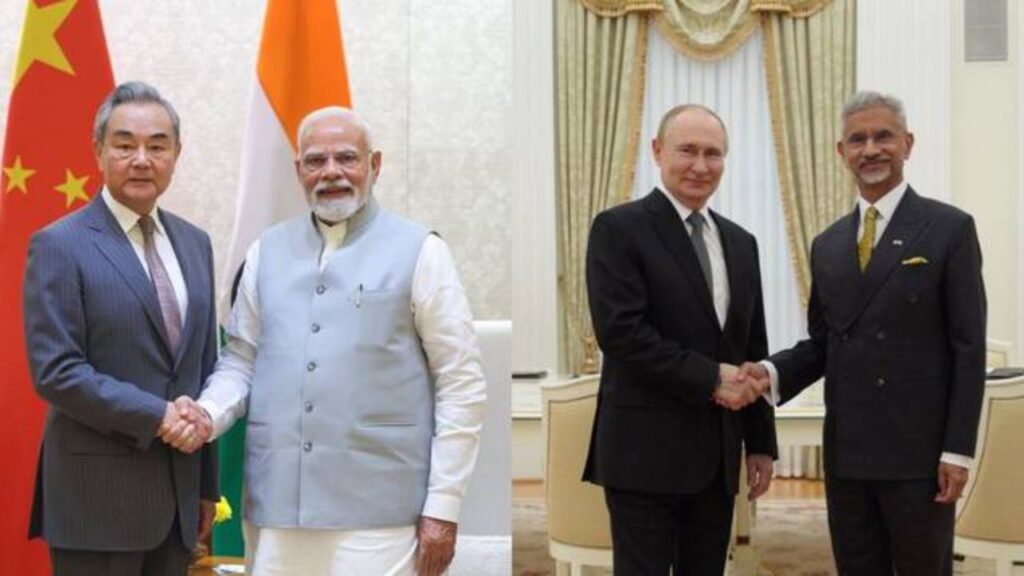Despite recent high-profile meetings between former U.S. President Donald Trump, Russian President Vladimir Putin, and Ukrainian President Volodymyr Zelensky, uncertainty over the Russia-Ukraine conflict and escalating tariff disputes continues to unsettle global markets. Against this backdrop, a quiet but significant realignment in global trade architecture is emerging—linking Beijing, Moscow, and New Delhi.
Reports suggest President Putin will visit India by the end of 2025, while Prime Minister Narendra Modi is preparing for his first trip to China in seven years to attend the Shanghai Cooperation Organisation (SCO) Summit. Observers argue that these developments go beyond routine diplomacy, hinting at a deeper strategic convergence among the three powers.
Experts on the Triad
Analysts believe that Trump’s tariff measures will have limited impact on global merchandise trade, as the world economy is no longer unipolar but increasingly multipolar. Many countries, they say, are setting aside political friction in order to prioritise business interests. However, Washington’s tariff push is expected to accelerate geopolitical realignments, with the growing alignment between India, China, and Russia being seen as a response to economic pressure.
Manish Bhandari, Founder of Vallum Capital, explained:
“Each nation brings unique strengths to this trinity: China dominates manufacturing, Russia controls energy supplies, and India offers vast service capabilities alongside an enormous untapped consumer market. This isn’t just about trade numbers—it signals a deeper transition from a Western-led trade order to one where Eurasian economies increasingly call the shots.”
Five Drivers Behind the Convergence
1. Economic Scale and Unity
Together, India, China, and Russia represent nearly one-third of global GDP on a purchasing power parity basis. Experts suggest Trump’s tariffs, rather than dividing them, have acted as a catalyst for closer economic cooperation.
2. Export and Reserve Strength
The trio contributes close to one-fifth of global merchandise exports and collectively hold foreign reserves worth $4.7 trillion—38% of the global pool. With over 3.1 billion people, they also represent the world’s largest consumer base.
3. Reducing Dollar Dependence
Sanctions on Russia and the broader U.S. tariff strategy have encouraged trade settlement in local currencies, reducing reliance on the U.S. dollar. Analysts believe this trend will accelerate de-dollarisation, particularly in the energy trade.
4. Defence and Energy Cooperation
Washington’s tariff regime is seen by some as a means of protecting its defence and NATO-linked markets. In contrast, India, China, and Russia together spend over $549 billion on defence and account for 35% of global energy consumption—underscoring their collective strategic heft.
5. Reimagining Global Partnerships
With Russia offering affordable energy, China driving manufacturing, and India excelling in services, experts argue that the three countries can build a sustainable and complementary economic partnership. Avinash Gorakshkar, a SEBI-registered market analyst, described the grouping as “a renaissance in global order.”
India’s Emerging Leverage
Bhandari suggested that India may emerge as the dominant partner in the alliance:
“The global trade narrative is shifting from ‘China+1’ to ‘India+2.’ Russia’s resources and China’s investments in India could reshape markets in ways that position India at the centre of new trade flows.”
Echoing this, Gaurav Goel of Fynocrat Technologies noted that the trinity offers New Delhi new bargaining power:
“This alignment could give India leverage in negotiating with China on the Belt and Road Initiative, especially as Western tariffs weigh heavily on Beijing’s export-led growth model.”
A New Global Order in the Making
While the U.S. continues to assert pressure through tariffs and defence realignments, the growing India-China-Russia partnership signals a major shift in global economic architecture. What began as responses to sanctions and tariffs is fast evolving into an alternative trade and financial ecosystem—one that could challenge traditional Western dominance.
